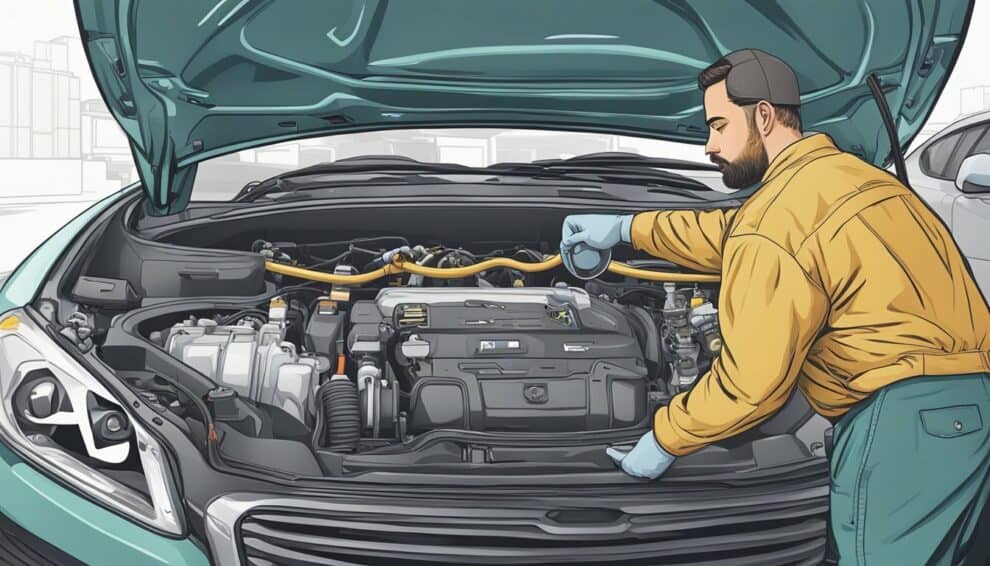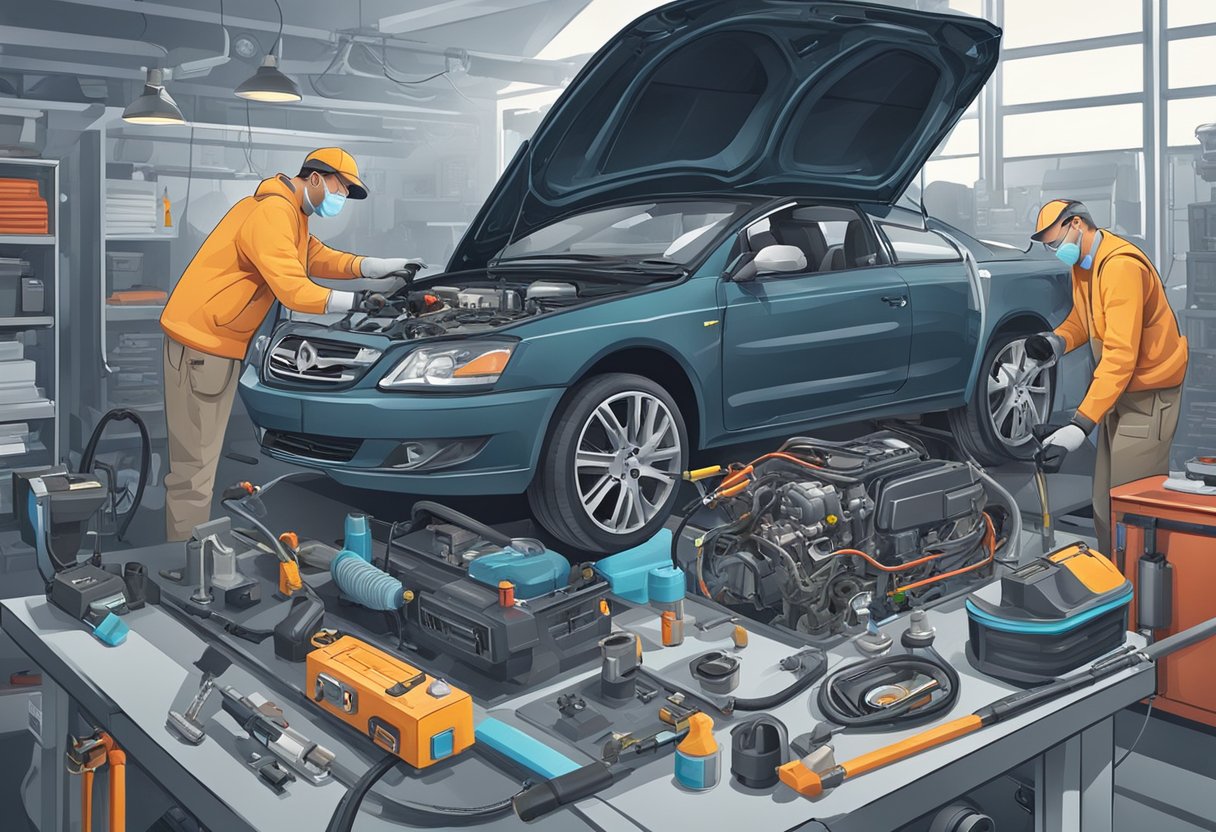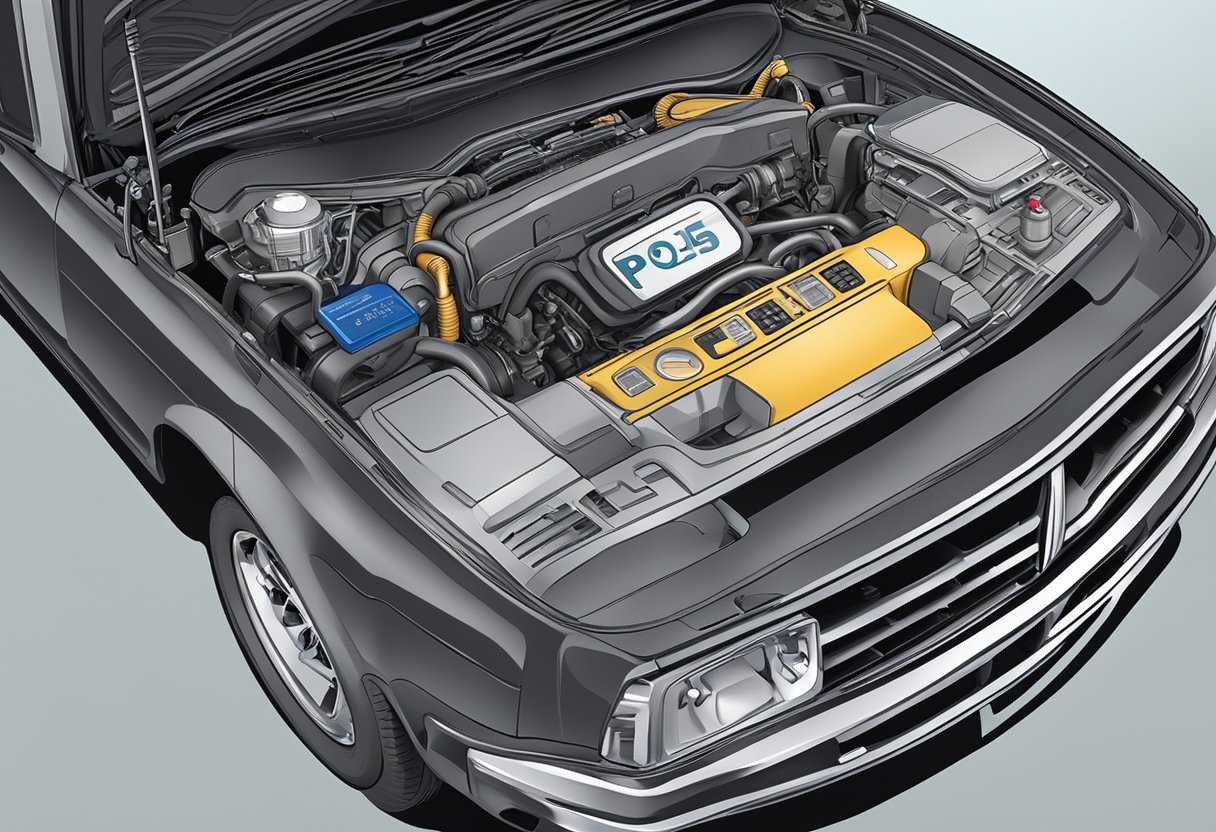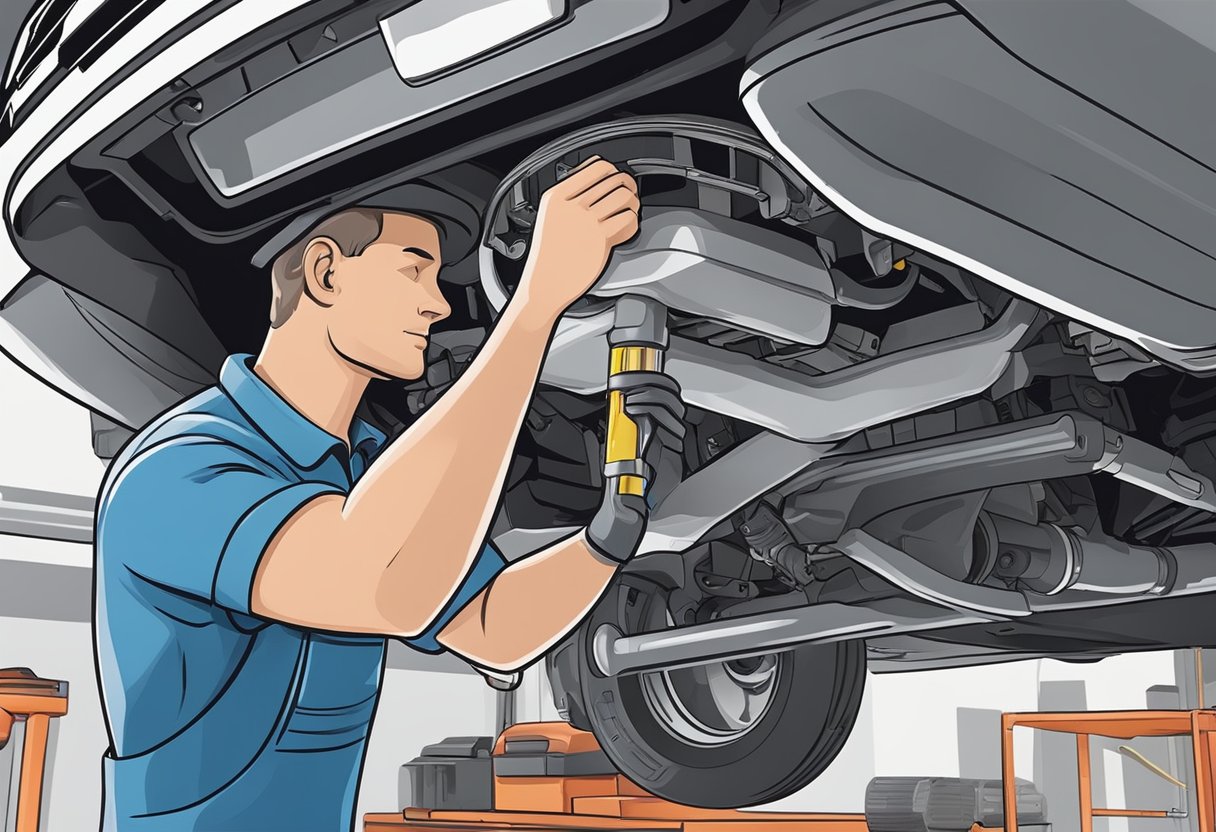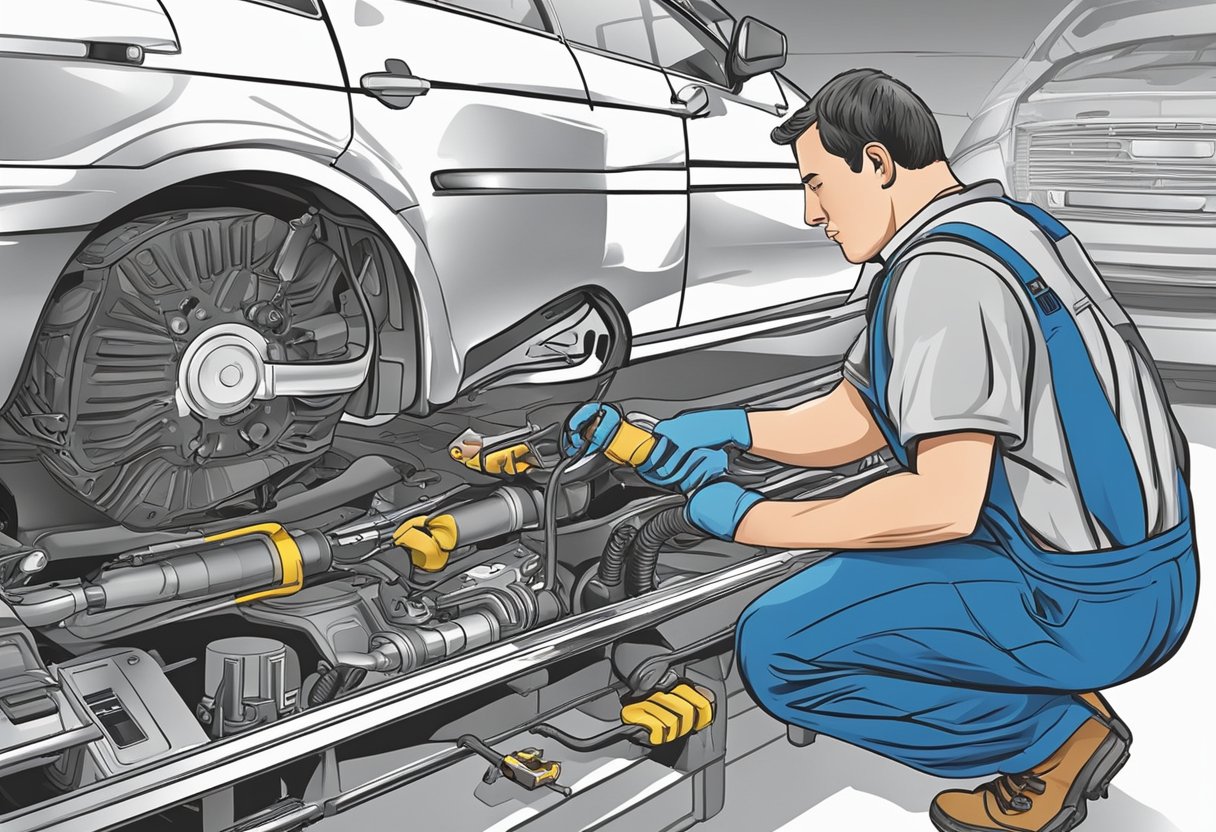If you own a vehicle, you’re probably familiar with the dreaded check engine light. While it can be caused by a variety of issues, one common culprit is a malfunctioning oxygen sensor. Specifically, the P0153 code is often triggered by a sluggish O2 sensor. This code indicates that the sensor is not responding as quickly as it should, which can lead to a variety of problems with your vehicle’s performance.
So what exactly is an oxygen sensor, and why is it so important? Put simply, an O2 sensor measures the amount of oxygen in your vehicle’s exhaust system. This information is then used by the engine control module to adjust the air/fuel mixture to ensure optimal performance and fuel efficiency. When an O2 sensor becomes sluggish, it can cause the engine to run too rich or too lean, which can result in decreased power, poor fuel economy, and increased emissions. In this article, we’ll take a closer look at the P0153 code and explore some strategies for overcoming this common challenge.
Understanding O2 Sensors
Function of O2 Sensors
O2 sensors, also known as oxygen sensors, are vital components of a vehicle’s exhaust system. They are responsible for measuring the amount of oxygen in the exhaust gases and transmitting this information to the engine control module (ECM). The ECM then uses this information to adjust the air/fuel ratio to optimize engine performance and reduce emissions.
There are typically two types of O2 sensors: upstream and downstream. Upstream sensors are located in the exhaust manifold before the catalytic converter, while downstream sensors are located after the converter. Upstream sensors are responsible for measuring the air/fuel ratio, while downstream sensors monitor the efficiency of the catalytic converter.
Significance of the P0153 Code
The P0153 code is a common OBD-II trouble code that indicates a problem with the upstream O2 sensor on bank 2. This code is triggered when the ECM detects that the sensor is reading a voltage signal that is too low or too high, indicating that the sensor is not responding quickly enough.
The most common cause of the P0153 code is a faulty O2 sensor. However, other issues such as a vacuum leak, exhaust leak, or wiring problem can also trigger this code. It is important to diagnose and repair the issue promptly to prevent damage to the catalytic converter and ensure proper engine performance.
In summary, understanding the function of O2 sensors and the significance of the P0153 code is crucial for maintaining optimal engine performance and reducing emissions. Regular maintenance and prompt diagnosis of any issues can help prevent costly repairs and ensure the longevity of your vehicle.
Diagnosing the Issue
Tools Required for Diagnosis
Before diagnosing the P0153 code, you need to have the following tools at your disposal:
- OBD-II scanner
- Multimeter
- Propane torch
- Heat-resistant gloves
- Safety goggles
Step-by-Step Diagnostic Procedure
-
Connect the OBD-II scanner to the diagnostic port and retrieve the trouble codes. If you find the P0153 code, it means that the O2 sensor in bank 2, sensor 1 is showing sluggishness or slow response.
-
Inspect the O2 sensor for any physical damage, including cracks, corrosion, or loose connections. Replace the sensor if you find any signs of damage.
-
Check the wiring harness for any signs of damage, such as frayed wires, loose connections, or corrosion. Repair or replace the wiring harness as necessary.
-
Use the multimeter to test the O2 sensor’s voltage output. Heat the sensor with the propane torch and observe the voltage output. If the voltage output does not change or is slow to respond, the sensor is likely faulty and needs to be replaced.
-
Check the exhaust system for any leaks or blockages. A clogged catalytic converter or exhaust pipe can cause sluggishness in the O2 sensor. Replace or repair any damaged components.
By following these steps, you can diagnose and overcome the P0153 code challenge caused by O2 sensor sluggishness. Remember to wear safety goggles and heat-resistant gloves when working with the propane torch to avoid any accidents.
What Causes O2 Sensor Sluggishness, and How Can It Be Fixed?
O2 sensor sluggishness can be caused by a variety of factors, including a dirty or damaged sensor, fuel additives, or engine problems. To fix this issue, start by checking for any carbon buildup or physical damage to the sensor, and then consider replacing it if necessary. Additionally, diagnosing and fixing high p0108 code could help resolve the sluggishness.
Addressing O2 Sensor Sluggishness
If you are experiencing the P0153 code, it is likely that your O2 sensor is not functioning properly. The sluggishness of the O2 sensor can be caused by a variety of factors, but it is important to address the issue promptly to avoid further damage to your vehicle.
Common Causes of Sluggishness
There are several common causes of O2 sensor sluggishness. One of the most common causes is a buildup of carbon deposits on the sensor. This buildup can occur over time and can cause the sensor to become less responsive. Another common cause of sluggishness is a faulty or damaged sensor. If the sensor is damaged, it may not be able to detect the correct levels of oxygen in the exhaust and will provide inaccurate readings.
Repair and Replacement Options
If you are experiencing O2 sensor sluggishness, there are several options for repair and replacement. One option is to clean the sensor to remove any carbon buildup. This can be done using a specialized cleaning solution and a soft-bristled brush. Another option is to replace the sensor entirely. If the sensor is damaged or faulty, replacement is often the best course of action.
When replacing the sensor, it is important to ensure that you are using a high-quality replacement part. OEM (original equipment manufacturer) parts are often the best choice, as they are designed specifically for your vehicle and will provide the best performance. It is also important to have the replacement sensor installed by a qualified mechanic to ensure that it is installed correctly and functioning properly.
In conclusion, addressing O2 sensor sluggishness is important to ensure that your vehicle is running smoothly and efficiently. By identifying the common causes of sluggishness and exploring repair and replacement options, you can take the necessary steps to keep your vehicle in top condition.
Preventive Measures and Maintenance
Regular Sensor Maintenance
Regular maintenance of your O2 sensor can prevent sluggishness and help you avoid the P0153 code. One of the easiest ways to maintain your sensor is to clean it regularly. Use a soft-bristled brush and a cleaning solution to clean the sensor. Make sure to avoid using harsh chemicals that can damage the sensor.
Another way to maintain your O2 sensor is to replace it at regular intervals. Typically, sensors last between 60,000 and 100,000 miles. However, it’s always best to check your vehicle’s owner’s manual for specific recommendations.
Avoiding Common Pitfalls
One of the most common pitfalls that can cause O2 sensor sluggishness is a faulty catalytic converter. The catalytic converter is responsible for converting harmful emissions into less harmful ones. If the catalytic converter is not functioning properly, it can cause the O2 sensor to read incorrectly.
Another common pitfall is ignoring warning signs. If your check engine light comes on, it’s important to address the issue as soon as possible. Ignoring warning signs can lead to more serious problems down the road.
By following these preventive measures and maintenance tips, you can avoid O2 sensor sluggishness and overcome the P0153 code challenge. Regular maintenance and attention to warning signs can help keep your vehicle running smoothly and efficiently.
Advanced Troubleshooting Techniques
If you’ve gone through the basic troubleshooting steps and still can’t seem to get rid of the P0153 code, it’s time to try some advanced techniques. Here are a few things to consider:
-
Check the wiring: Sometimes, a faulty connection or damaged wire can cause the O2 sensor to send incorrect readings. Use a multimeter to check the resistance of the wires and make sure they’re not damaged or corroded.
-
Clean the sensor: Over time, the O2 sensor can become coated with oil, dirt, and other contaminants that can affect its performance. Try cleaning the sensor with a soft brush and some electrical contact cleaner.
-
Replace the sensor: If all else fails, it may be time to replace the O2 sensor. Make sure to buy a high-quality replacement sensor that meets the specifications of your vehicle.
Remember, advanced troubleshooting techniques should only be attempted by experienced mechanics or those with a good understanding of automotive systems. If you’re not comfortable with these techniques, it’s best to take your vehicle to a professional mechanic for diagnosis and repair.
As an Amazon Associate we earn from qualifying purchases.







